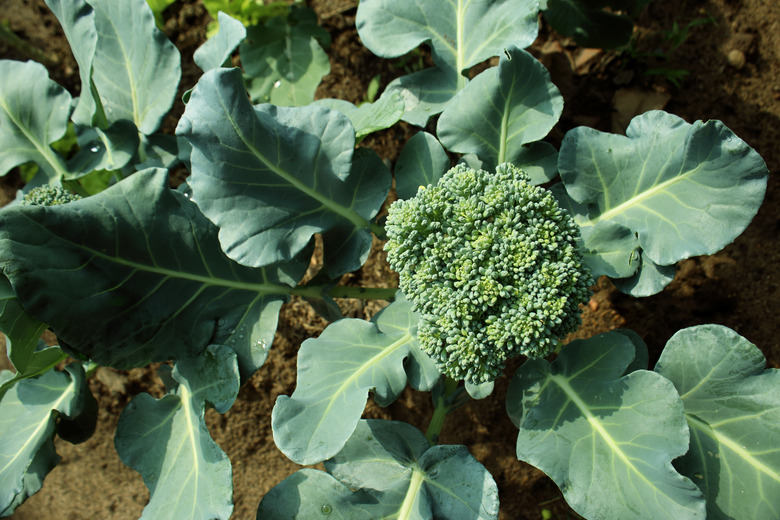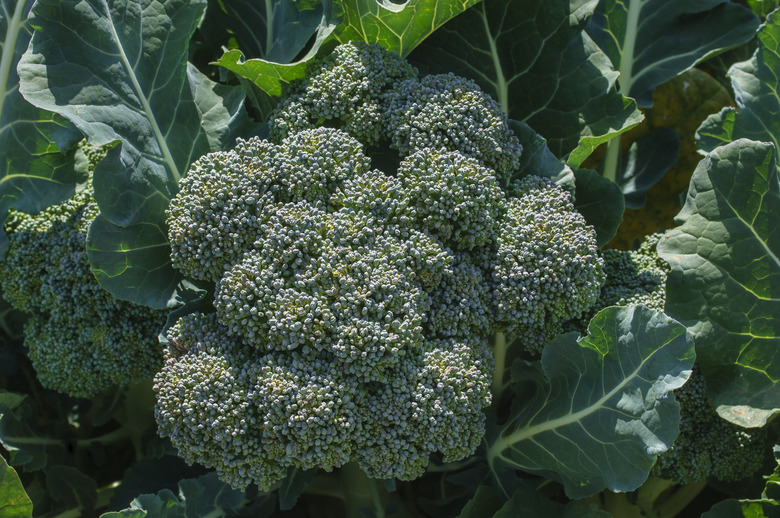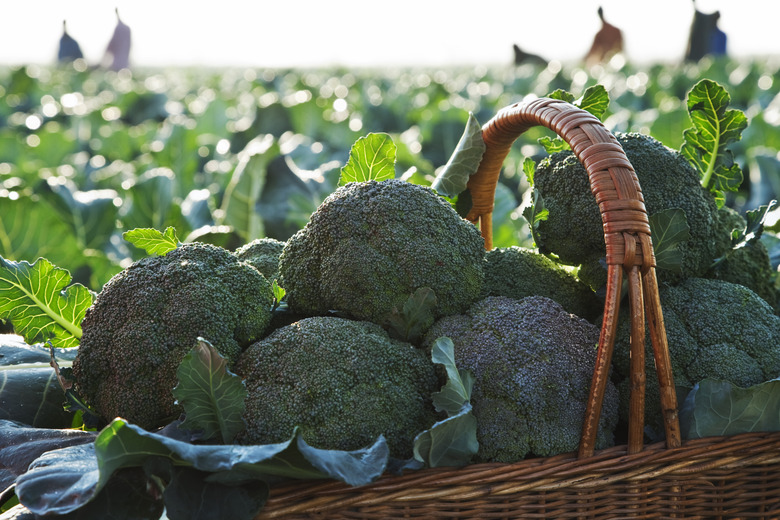How To Grow Broccoli
We may receive a commission on purchases made from links.
Broccoli (Brassica oleracea [Italica group]) makes a wonderful addition to a vegetable garden, and on the whole, broccoli plants are pretty easy to grow. Since it is hardy, it can be cultivated nearly anywhere in the United States if care is taken to plant and harvest it when weather conditions are favorable. This vegetable finds a place in many home gardens, and it has been eaten and enjoyed for a very long time.
Broccoli originally hails from the Mediterranean region, and it eventually worked its way over to the shores of the U.S. In fact, most of the broccoli produced for consumption today comes from California, and the vegetable has enjoyed increasing popularity over time. A member of the mustard family (Brassicaceae), it's related to cauliflower, Brussels sprouts and cabbage. The broccoli heads that are harvested are actually imature flower buds that have not yet opened.
Best Uses for Broccoli
Best Uses for Broccoli
Broccoli is a popular vegetable that is served on dinner tables everywhere. It's also a very healthy vegetable. Low in calories and high in vitamins such as K and C, it's served as a side dish, in soups and is included in a variety of meals, such as stir-fry dinners. In fact, the average American eats close to 6 pounds of broccoli each year. This vegetable is consumed both cooked and raw, and the florets, stems and leaves are all edible, though many people prefer the florets. In addition, broccoli is an attractive-looking plant in the garden, so it can serve a decorative function as well.
Broccoli is sold both fresh and frozen in grocery stores with the frozen varieties including both cuts and florets—but growing broccoli in a garden provides homeowners with the opportunity to harvest this vegetable when it is at its peak, meaning better nutritional value and better taste. Although broccoli isn't extremely expensive at the store, it is far cheaper to grow it from seed like most vegetables. Gardeners can plant broccoli right in the ground or in a raised bed. This easygoing plant will do well in either. Broccoli can also be grown in large pots, but since the plant needs some space, it isn't always the most practical choice for most gardeners.
How to Grow Broccoli
How to Grow Broccoli
- Common Name: Broccoli
- Botanical Name: Brassica oleracea (Italica group)
- When to Plant: Either early spring or late summer/early fall
- USDA Zones: Grown as an annual in zones 3-10
- Sun Exposure: Full sun
- Soil Type: Moist, well-drained soil
- When it's in Trouble: Lower leaves turning yellow may mean there's not enough nitrogen in the soil
- When it's Thriving: Healthy leaves, firm green stalks and tight green and/or purple buds
Starting Broccoli From Seed
For fall plantings, sow seeds directly into the ground or a raised bed at a 1/2 inch depth around 12 weeks before the frost. Space them 12 to 20 inches apart. Seeds should germinate in about four to seven days.
Starting Broccoli From a Seedling
For spring plantings, get broccoli seeds going indoors somewhere between six and eight weeks prior to the last frost date in the region. Be sure to provide them with plenty of light when sprouted. The seedlings should be ready to go into the ground a couple of weeks before the final frost date. Check the hardness of the ground to know when to plant in that time frame. Space them 12 to 20 inches apart and cover to protect them from frost when/if needed.
In What Zone Does Broccoli Grow Best?
In What Zone Does Broccoli Grow Best?
Even though broccoli can be grown in most USDA plant hardiness zones (3 through 10) as an annual crop, there are some basics to keep in mind. Depending on the location, broccoli can be either a spring planting or a fall planting. These are plants that grow best in cool weather, and they don't do very well with heat. This means there is potential for both a spring and fall growing season in some areas. However, much of this depends on the frost date and the overall temperature range in the summer months. Check for local information on the USDA plant hardiness zone map.
When Should You Plant Broccoli?
When Should You Plant Broccoli?
Broccoli likes cooler weather and grows best around 70 degrees. Regardless of whether you are planting from seed or transplanting seedlings, protecting plants from frost and temperatures above 80 degrees is the best way to ensure a good harvest. This may be slightly different for every region, but it is a good guideline for gardening success. In spring, it's smart to harden off seedlings prior to planting by gradually exposing them to the outside over a period of time. Also, if the weather gets very warm, mulch may help keep the plant cooler.
Soil, Sunlight and Water Recommendations for Broccoli
Soil, Sunlight and Water Recommendations for Broccoli
Plant broccoli in an area that gets full sunlight so that it doesn't become leggy. This means somewhere between six and eight hours per day minimum, so be sure to take that into account when deciding where to locate the crop. Broccoli needs soil that is fertile and that drains well, so don't plant it at a low spot in the yard where water collects.
Supplementing the soil with an organic fertilizer or compost is helpful and is recommended prior to planting. This provides nutrients so the plant will grow well. Be sure to work the material into the soil thoroughly and mix it somewhere between 2 and 4 inches deep. In addition, broccoli favors soil that is slightly acidic with a pH somewhere between 6 and 7.
While broccoli won't appreciate soil that doesn't drain well, it does need to have moist soil to grow properly. Water about 1 to 1 1/2 inches per week. The plants may need more frequent watering if conditions are especially dry. Check the soil frequently to evaluate the moisture level and try to strike a balance so the plant isn't overwatered either. Be careful to avoid wetting the bud area of the plant, as this can cause rotting and can contribute to other issues.
How to Harvest Broccoli
How to Harvest Broccoli
When the central broccoli head has developed, harvest it early in the day by cutting about 5 or more inches down from the florets and be sure to cut on an angle so water won't be able to pool in the stem. Do this with a sharp knife to preserve the rest of the plant. Once this main head is removed, side shoots often grow that are smaller in size. When these mature into "mini heads," remove them the same way and keep harvesting as long as they continue to grow. Also, once the main head has been cut, it's often helpful to fertilize the plant again to encourage the growth of these shoots.
Common Pests and Other Problems for Broccoli
Common Pests and Other Problems for Broccoli
As with most vegetables, broccoli has its fair share of garden pests. Aphids are one of these. The tiny insects attack the leaves of the plant, sucking the juices and causing them to curl. If aphids are suspected, spray water on the leaves to remove them. This treatment also works for whiteflies.
Another common insect found on broccoli is the cabbage looper, which chews holes in the leaves. Look carefully for these and other similar pests, like cabbage worms, and pick them off by hand. If they are persistent, try using breathable netting to protect the plants. Cabbage loopers can also be treated with Bacillus thuringiensis if they are persistent. If it's cool enough, floating row covers can also work, and they can also be used to help protect plants from frost. Just be sure to use caution when using them in warmer weather because they can overheat the plant.
Something of note to keep in mind is that broccoli should not be allowed to flower. This is referred to as "bolting," and even though the yellow flowers are pretty, it makes the vegetable taste bad. Keep a watchful eye on the buds and make sure to harvest the plants when they are still tight for best results. If any yellow at all is seen peeking out from the buds, be sure to harvest the plant right away.
Another common issue for broccoli plants is a lack of nitrogen in the soil. Pay attention to the leaves of the plant, especially the lower ones. If they begin to turn yellow, the soil may be deficient in nitrogen. Another symptom is if the plants are not growing in well. An easy fix, this problem can be solved by mixing in blood meal to restore nitrogen to the soil.
If broccoli is not elevated in a garden bed, it may be wise to fence off the area to keep pets and other animals from damaging the plantings. Broccoli tends to have shallow roots and can be disturbed more easily than many other plants.
Common Diseases for Broccoli
Common Diseases for Broccoli
Mildew and fungus are problems that are common to the broccoli plant and other members of the cabbage family. Clubroot is a particularly nasty fungus that causes wilting, yellow leaves and permanent damage to the root of the plant. The only way to know for sure if the broccoli is affected is to dig up the plant and examine the roots to see if they look clubbed. Once the spores of the fungus get into the soil, it is contaminated, and the plant cannot be saved. Soil remains contaminated for cabbage-family plants for some time, so it's best to plant another type of crop there (from another plant family) going forward.
Downy mildew is another problem for broccoli, especially in cool, wet weather. It tends to crop up either early or late in the growth season. Watch for yellow patches on the leaves of plants and/or fuzzy-looking areas underneath the leaves. The best practice is to keep this problem from happening in the first place. Good air circulation and careful watering can help prevent this issue as well as looking for broccoli plants that have been cultivated to be resistant to this problem. If it does appear, treat the plant with a fungicide.


